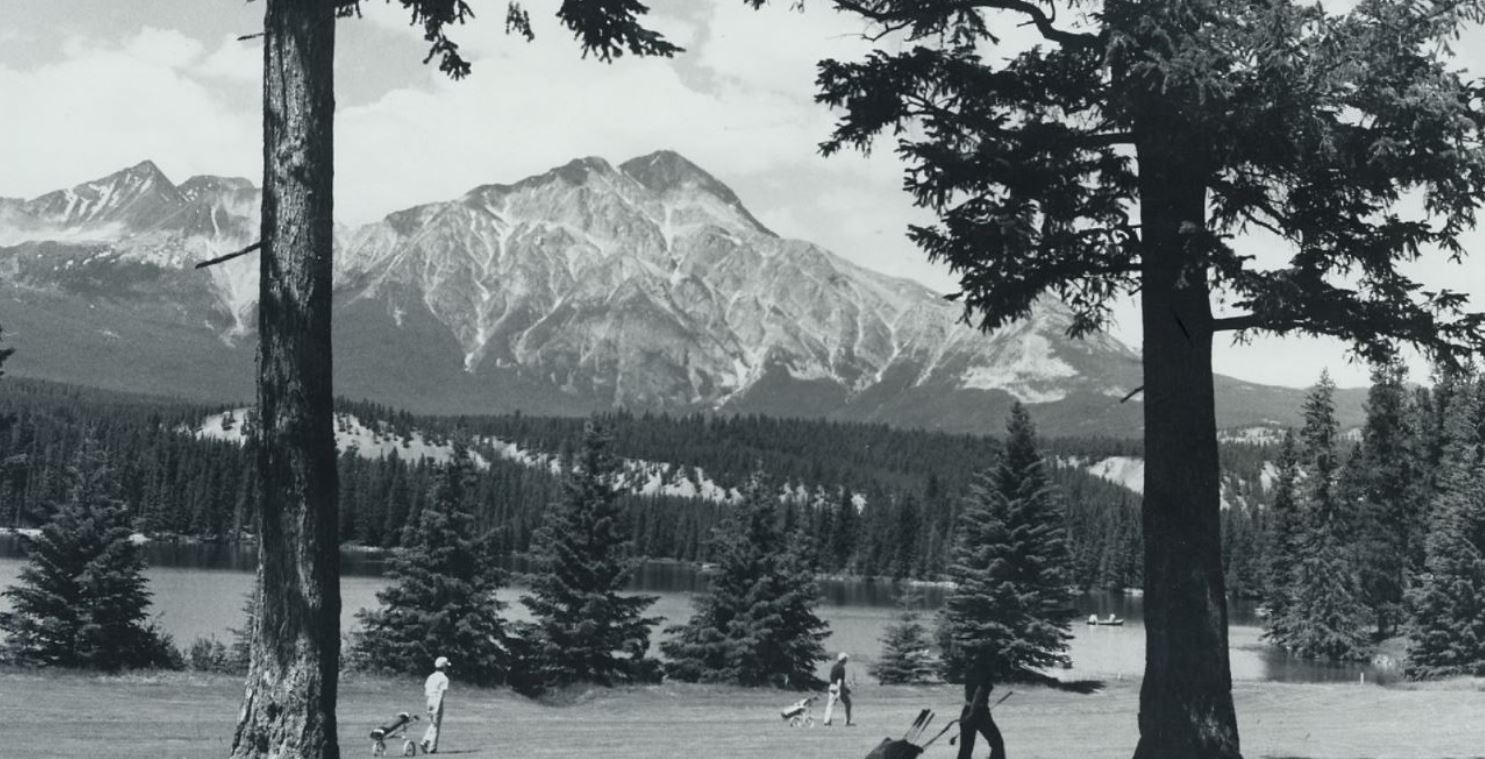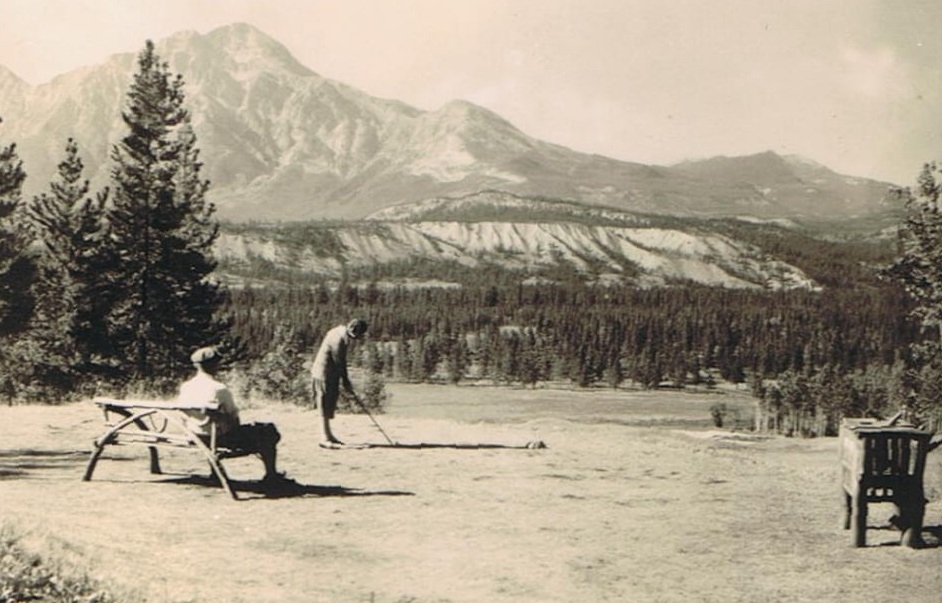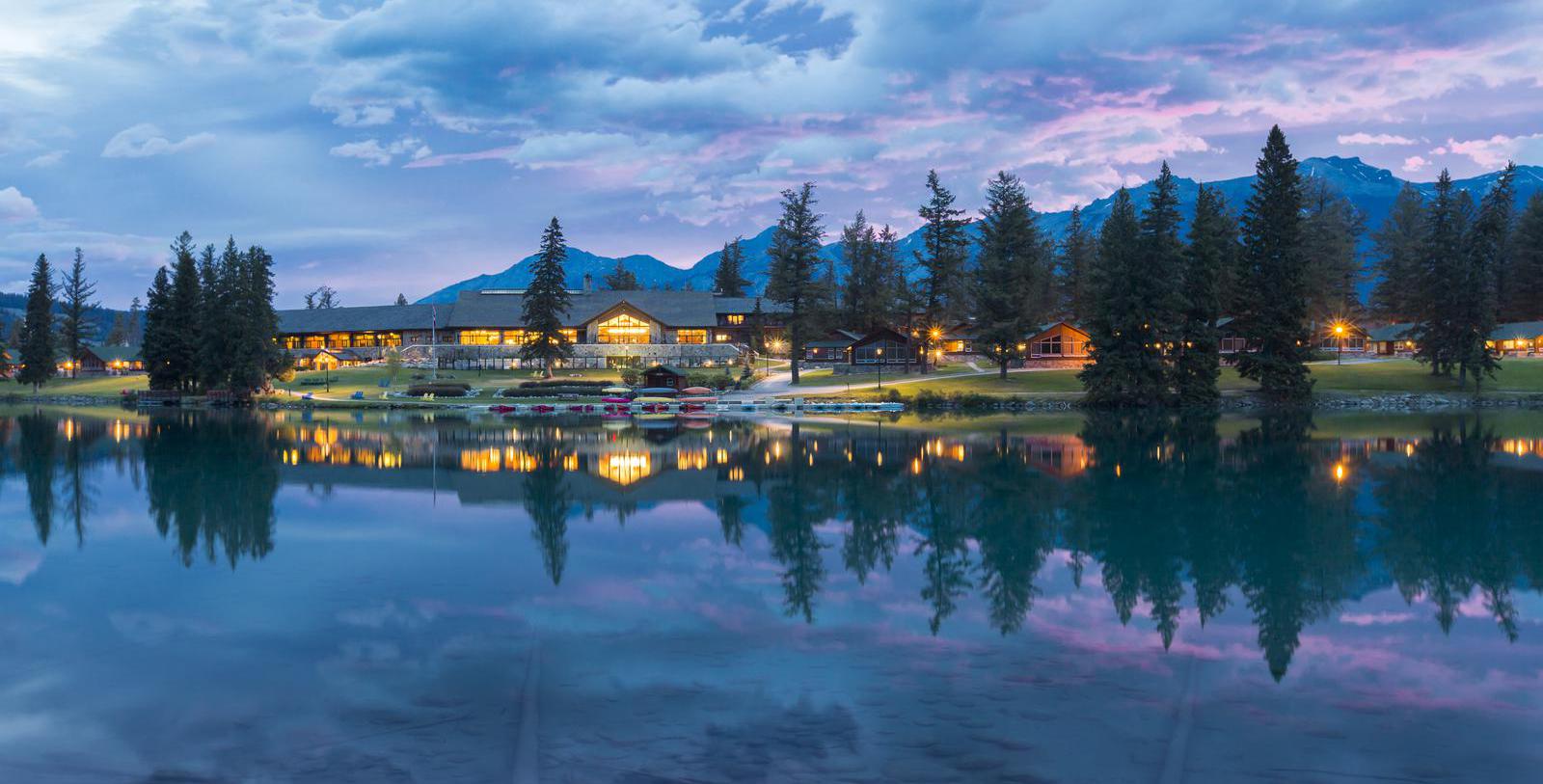Receive for Free - Discover & Explore eNewsletter monthly with advance notice of special offers, packages, and insider savings from 10% - 30% off Best Available Rates at selected hotels.
golf
Discover the Fairmont Jasper Park Lodge Golf Course, which was originally designed by the great Stanley Thompson.
Experience Fairmont Jasper Park Lodge Golf Club
For over 20 consecutive years, SCOREGolf magazine has ranked this Canada’s #1 Golf Resort Course. The reason is simple: 18 greens arranged around breathtaking panoramas of the park’s glassy glacial lakes, hulking snow-capped peaks, and fairways framing lush forest.
WATCH NOWAt the height of the Roaring Twenties, Canadian National Railway debuted a series of eight log cabins as the first iteration of the Fairmont Jasper Park Lodge. The site had previously been a popular tourist attraction known as “Tent City,” where enthusiastic alpinists would camp to explore the verdant wilderness of Jasper National Park. The nascent Fairmont Jasper Park Lodge quickly became one of Canada’s most exclusive retreats in a matter of months, with hundreds of guests arriving to experience its secluded setting and fascinating character. To further enhance the appeal of the Fairmont Jasper Park Lodge, Canadian National Railway decided to expand upon the available facilities. Among the projects it opted to pursue was the creation of a magnificent 18-hole golf course beyond the resort’s front door. To oversee the work, Canadian National Railway hired a renowned golf course architect named Stanley Thompson. Known for seamlessly incorporating the geography of the natural landscape into his designs, Thompson proceeded to construct a brilliant series of fairways that masterfully traversed the surrounding forest. Thompson’s vision was a massive undertaking though, involving the use of 200 laborers split into 50 different teams just to clear the land alone. Nevertheless, when Stanley Thompson’s course for the Fairmont Jasper Park Lodge finally opened in 1925, it rapidly emerged as one of the best destinations to play a round of golf throughout Canada. Some contemporary visitors even considered the design to be his best! In the decades since its grand opening, the Fairmont Jasper Park Lodge Golf Course has remained an elite paradise for avid golfers of all skill levels. Indeed, the golf course has received significant praise over the years for its terrific layout from such respected institutions as SCOREGolf magazine. Few places can thus rival the outstanding heritage of the Fairmont Jasper Park Lodge Golf Course.
-
About the Location +
Fairmont Jasper Park Lodge resides along Lac Beauvert, a beautiful glacier-fed lake that once covered the entire Jasper Valley thousands of years ago. A brilliant trail extends for more than two miles around its shoreline, offering guests a fantastic way to tour the surrounding countryside. Lac Beauvert itself is located deep within Jasper National Park of Canada, which UNESCO declared a World Heritage Site in 1984. Originally founded in 1907, the park is one of the many destinations that constitute the Canadian Rocky Mountains Park System. It is specifically positioned just north of Banff National Park on the eastern end of the Canadian Rockies. The park is named after Jasper Hawes, a merchant who operated a remote trading post on behalf of the North West Company during the early 19th century. Known as the “Jasper House,” the fort supplied provisions to those interested in traversing the area’s rugged geography as a means of reaching the Pacific Northwest. The Jasper House ceased operating by the 1880s though, as new railroads made travel through the Canadian Rockies far less arduous. Eventually, the Grand Trunk Pacific Railway demolished the location to make way for its transcontinental route. The site of Hawes’ important trading post was nonetheless preserved as a National Historic Site of Canada.
Jasper National Park of Canada spans some 4,200 square miles and attracts nearly two million visitors every year. While most of the park is located within Front Ranges of the Canadian Rockies, a significant portion also extends deep inside the Continental Divide. As such, the park is home to several towering mountaintops, including Mount Columbia—the tallest peak in all of Alberta. It is also the site of numerous ancient glaciers that first formed during the last Ice Age, with the most notable being that of the Columbia Icefield. The largest glacier in the province, the Columbia Icefield is the primary source for all the major bodies of water that flow into the Pacific and Arctic Oceans, as well as the Hudson Bay watershed. Some of the park’s other celebrated attractions include Mount Edith Cavell, Pyramid Lake, and the Tonquin Valley. Jasper National Park of Canada is now a paradise for outdoor enthusiasts, offering access to fishing, kayaking, and miles of hiking trails. The area is also a major location for skiing and other winter sports in the colder months. Wildlife viewing is another cherished pastime within the park, as it hosts many fascinating species, such as bighorn sheep, moose, and a specific kind of elk known as a “wapiti.”
-
About the Architect +
Stanley Thompson: The mastermind behind the Fairmont Jasper Park Lodge’s esteemed golf course, Stanley Thompson has been hailed as one of the world’s best golf course architects. Although Thompson himself hailed from Toronto, he was born to Scottish parents in the late 19th century. Golf was big in his family growing up, with all five Thompson brothers working as caddies at the Toronto Golf Club. Stanley Thompson nonetheless decided to pursue an education, earning a degree from the Malvern Collegiate Institute and even enrolling in the prestigious Ontario Agricultural College for two years. Unfortunately, Thompson’s studies were abruptly interrupted when Canada joined the Allied cause during World War I. Enlisting in the Canadian Expeditionary Force, Thompson served with distinction in the 4th Brigade, Canadian Field Artillery throughout much of the conflict. Upon his return from serving overseas, Thompson began working in golf course design alongside his brother, Nicol, for some time, before the two finally formed a partnership with a longtime associate named George Cumming. (The Thompsons knew Cumming as the head professional of the Toronto Golf Club from their time working as caddies.) While the group’s company only constructed a handful of golf courses, the experience was invaluable for Stanley Thompson. The projects allowed him to begin refining his soon-to-be famous practices of using the natural flow of the land to guide his designs.
When their partnership finally dissolved in the early 1920s, Thompson subsequently went on to produce dozens of golf courses across Canada on his own. In just a matter of years, he gradually developed a celebrated reputation for his picturesque, scenic courses. Indeed, some of his best examples were in many of Canada’s national parks—or places that would become national parks—including Banff National Park, Jasper National Park, and the Cape Breton Highlands National Park. Demand for Thompson’s talents had become so great that by the end of the 1920s, he was able to begin hiring additional architects to handle his caseload. In fact, his firm had a hand in starting the careers of many other noteworthy golf course designers, such as Geoffrey Cornish and Robert Trent Jones Sr. In all, Stanley Thompson designed or renovated nearly 180 courses throughout his lifetime, playing an integral role in establishing golf firmly in Canada’s popular culture. He had even crafted several additional courses around the world, too, in places like Brazil, Colombia, and the United States. But perhaps his greatest achievement came later in his life when he helped found the American Society of Golf Course Architects alongside Donald Ross and Robert Trent Jones Sr. in 1948. Inducted posthumously into the Canadian Golf Hall of Fame several decades after his death during the 1950s, Thompson’s legacy has been rivaled by few others ever since.




























